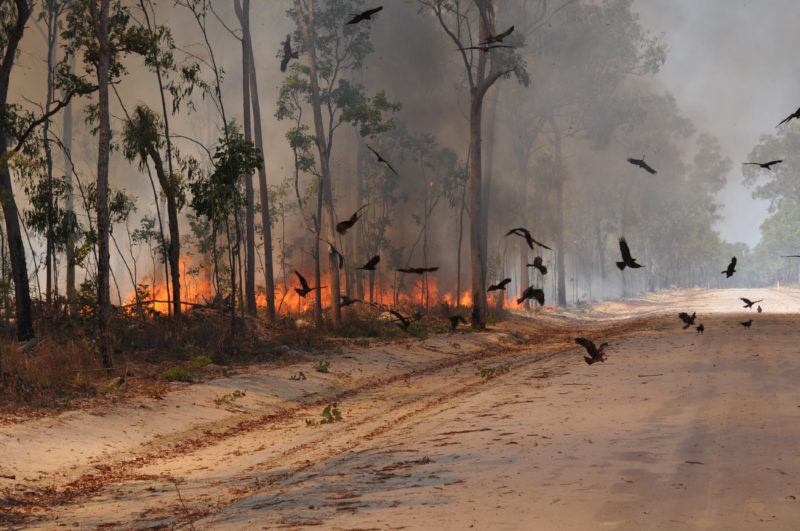Australian birds have weaponized fire in The National Post

From The National Post:
Australian birds have weaponized fire because what we really need now is something else to make us afraid
Raptors, including the whistling kite, are intentionally spreading grass fires in northern Australia, a research paper argues. The reason: to flush out prey and feast
Dick Eussen thought he had the fire beat. It was stuck on one side of a highway deep in the Australian outback. But it didn’t look set to jump. And then, suddenly, without warning or obvious cause, it did.
Eussen, a veteran firefighter in the Northern Territory, set off after the new flames. He found them, put them out, then looked up into the sky.
What he saw sounds now like something out of a fairy tale or dark myth. A whistling kite, wings spread, held a burning twig in its talons. It flew about 20 metres ahead of Eussen and dropped the ember into the brittle grass.
And the fire kicked off once again.
All told that day, Eussen put out seven new flare-ups, according to a research paper published recently in the Journal of Ethnobiology. All of them, he claims, were caused by the birds and their burning sticks.
What’s more, the paper argues, the birds might well have been doing it on purpose.
It’s a feeding frenzy, because out of these grasslands come small birds, lizards, insects, everything fleeing the front of the fire
Raptors, including the whistling kite, are intentionally spreading grass fires in northern Australia, the paper argues. The reason: to flush out prey and feast.
“Black kites and brown falcons come to these fronts because it is just literally a killing frenzy, it’s a feeding frenzy, because out of these grasslands come small birds, lizards, insects, everything fleeing the front of the fire,” Bob Gosford, one of the authors of the paper, told the Australian Broadcasting Corporation (ABC) in 2016.
The concept of fire-foraging birds is well established. Raptors on at least four continents have been observed for decades on the edge of big flames, waiting out scurrying rodents and reptiles or picking through their barbecued remains.
What’s new, at least in the academic literature, is the idea that birds might be intentionally spreading fires themselves. If true, the finding suggests that birds, like humans, have learned to use fire as a tool and as a weapon.
Gosford, a lawyer turned ethno-ornithologist (he studies the relationship between aboriginal peoples and birds), has been chasing the arson hawk story for years. “My interest was first piqued by a report in a book published in 1964 by an Aboriginal man called Phillip Roberts in the Roper River area in the Northern Territory, that gave an account of a thing that he’d seen in the bush, a bird picking up a stick from a fire front and carrying it and dropping it on to unburnt grass,” he told ABC.
